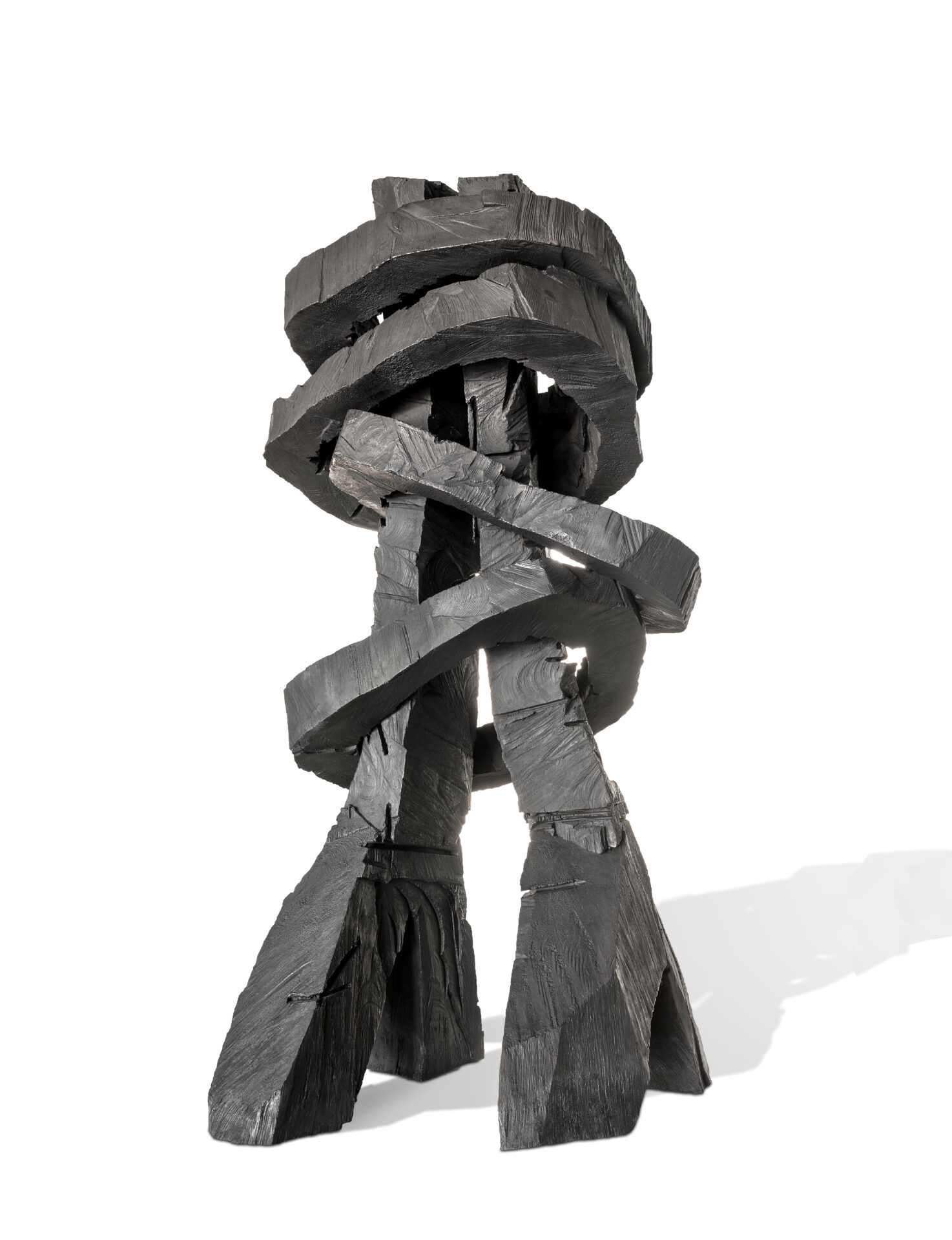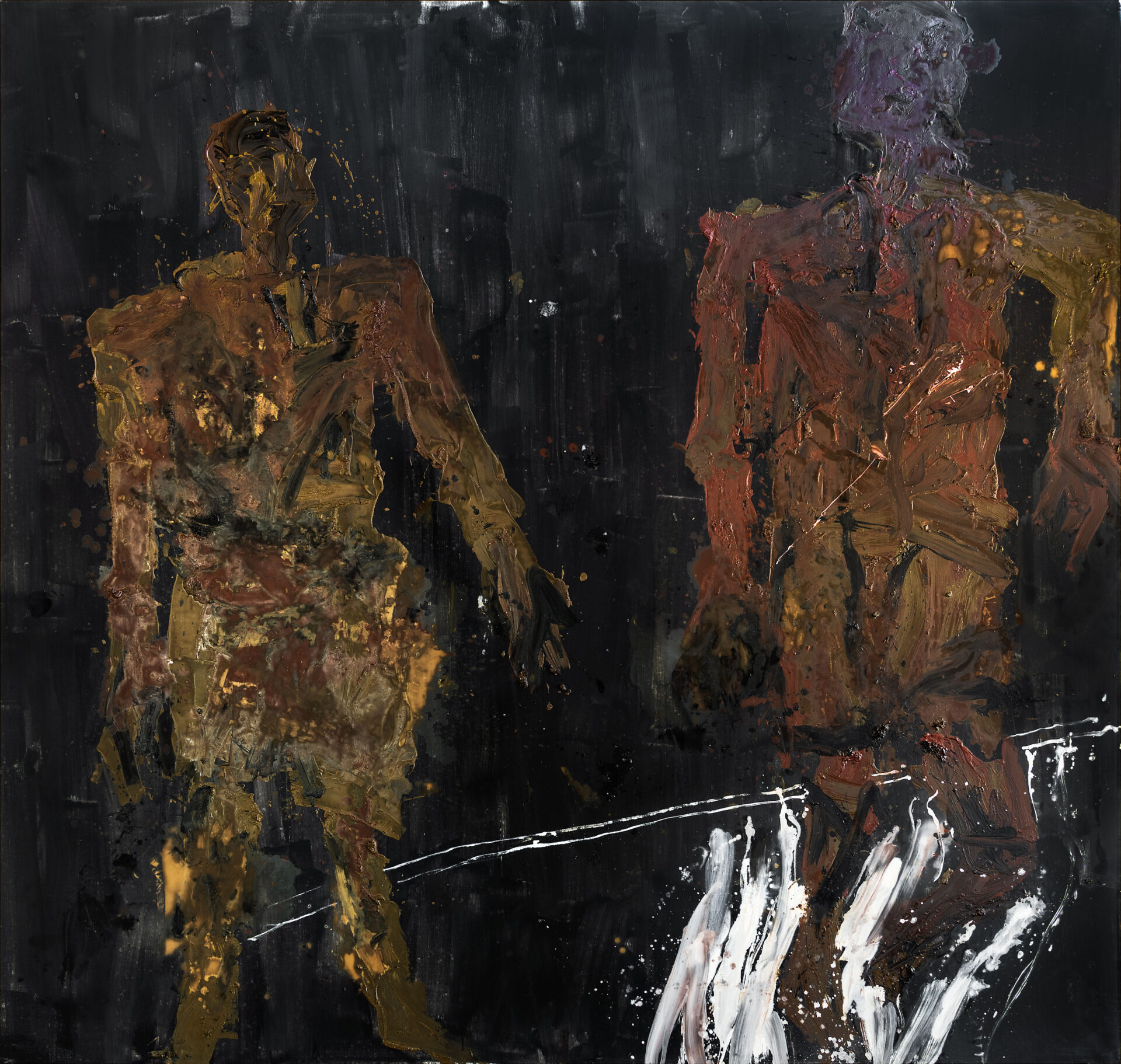Hans-Georg Kern was born on 23 January 1938 in Deutschbaselitz, and in 1961 he adopted the name of this village, located at that time in East Germany, and made it his artistic pseudonym from then on.
In 1956 he entered the Faculty of Fine and Applied Arts in East Berlin, from which he was expelled after two terms owing to his “social and political immaturity”, so he moved to West Berlin to complete his training.
During the 1960s, Baselitz began to develop his style, the first distinctive feature of which was inversion of the motifs, painting figures in an inverted or upside-down position for the first time in 1969: a technique that was to attract a great deal of attention and criticism from the artistic community. Another of his hallmarks was the aggressive and expressive style of his works, which were characterised by strength of colour and line.
He exhibited his first wooden sculpture in the German pavilion at the 1980 Venice Biennial, which he shared with the artist Anselm Kiefer. In the 1980s he took part in various group shows at institutions such as the Royal Academy of Arts and the Whitechapel Art Gallery in London, the Stedelijk Museum in Amsterdam and the Kunstmuseum in Basel, which brought him great acclaim and prominence.
The paintings Baselitz produced between 1990 and 2010 marked a new turn in his practice, showing a more linear and abstract approach to figures. In the Remix series (2005–08) he revisited his earlier works, representing his subjects graphically in such a way that their subtle meanings and technical innovations became more explicit. In 2015, his Avignon paintings (2014), a set of eight imposing nude self-portraits, were presented at the Venice Biennale.
To commemorate the artist’s eightieth birthday in 2018, solo exhibitions were held at the Fondation Beyeler in Basel, the Hirshhorn Museum in Washington, DC, and the Musée Unterlinden in Colmar, France. In 2019 he was elected a member of the Académie des Beaux-Arts in Paris and became the first living artist to have an exhibition at the Gallerie dell’Accademia in Venice, followed by his first major retrospective to date at the Centre Pompidou in Paris in 2021.
The Hortensia Herrero collection has two works by Baselitz: a painting, in which the figures, curiously, are not inverted, and the iconic sculpture Bündel (2015), representing some high heels made in bronze, although we can see the traces of the artist’s hand in the wood that he worked first with an axe and then with a chainsaw before casting it in bronze. This sculpture was shown in the exhibition Georg Baselitz: Archinto, held at the Palazzo Grimani Museum during the 2022 Venice Biennale.

